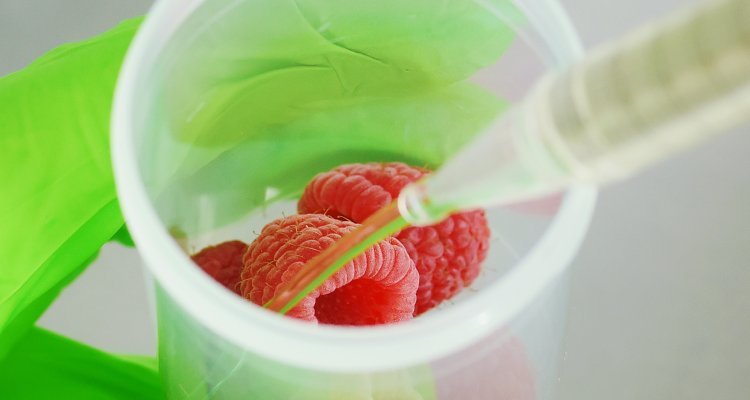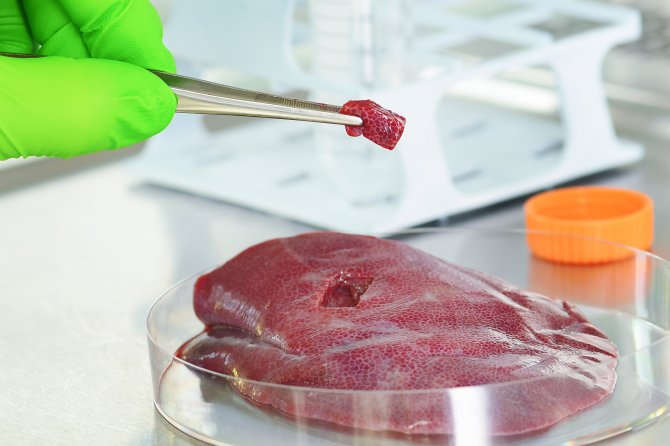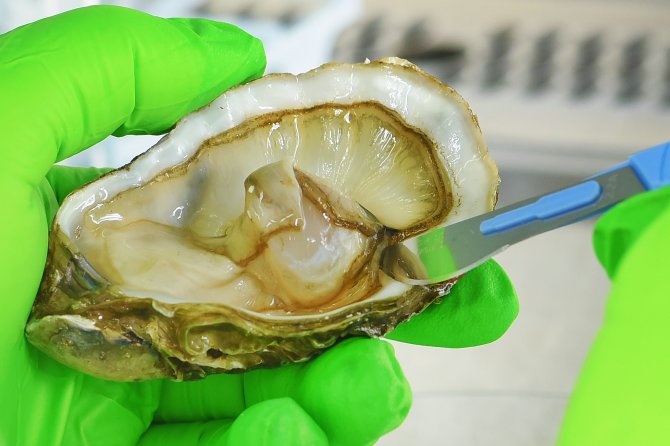
Virology
Wageningen Food Safety Research focusses on viruses that can be transmitted through food. Viruses of this sort are often exceptionally stable: more than most bacteria, they are resistant to a large extent to desiccation and heat, and are able to remain infectious for an extremely long time. In food, this is usually longer than the shelf life of the food product.
Examples include norovirus, well-known for outbreaks of gastric flu in hospitals and on cruise ships, and the hepatitis A virus, which may on exposure lead to jaundice resulting in long-term fatigue or more serious ailments. Every year, more people fall ill as a result of consuming food contaminated with norovirus than from any other micro-organism. Reliable research into the virological hazards in food is thus of great significance.
National centre of expertise for viruses in food
In the Netherlands, Wageningen Food Safety Research is the National Reference Laboratory (NRL) for viruses in food, with the exception of bivalve molluscs. In this domain, we are the national centre of expertise. By contrast with bacteria, most viruses that can be passed on through food cannot be amplified in culture. For this reason, our research associates extract the genomic material of viruses from samples for molecular detection with the aid for example of PCR. Apart from food samples, we also test surfaces for possible contamination.
Qualitative and quantitative measurements
Wageningen Food Safety Research conducts qualitative and quantitative measurements under accreditation: an investigation is carried out not only into whether the sample is contaminated, but also into the quantity of the virus present. We investigate the viruses in greater detail using genome sequencing analysis. We then conduct a trend analysis with a view to comparing contamination over time and between different regions of origin. In conclusion, we offer advice on new risks and developments in the food production chain. In this way we deploy our expertise on the risks emanating from viruses right at the start of the food chain.
Wageningen Food Safety Research conducts qualitative and quantitative measurements under accreditation: an investigation is carried out not only into whether the sample is contaminated, but also into the quantity of the virus present.
Reliable research into the virological hazards in food
Below you will find out more about our varied work and how we make a contribution through them to food safety:
Viruses transmitted through food
We focus on viruses that can be transmitted through food, the best known of which are norovirus (gastric flu) and the hepatitis A and E viruses (inflammation of the liver). Norovirus and hepatitis A virus can be transmitted human-to-human, via contaminated surfaces, and also via water or food contaminated with faeces. The hepatitis E virus is present in many pigs and may cause disease after eating inadequately heated/cooked liver or other pork product. Research at WFSR extends to research into the rotavirus (gastric flu) among other things.

Sources of contamination
In order to trace viruses that can be passed on through food, WFSR assesses samples taken throughout the entire food chain. Samples are taken from the primary sector (shellfish, agricultural products, slurry), imports and industrial production, and retail and catering companies. Contamination with viruses can occur throughout the entire chain via faecally contaminated water, ingredients or hands of the person preparing the food. For example, a strawberry may have been picked by someone with contaminated hands, washed in contaminated water, or contaminated once in a restaurant. The challenge here is that the virus is often present in low quantities, is not distributed homogeneously throughout the sample, and is thus difficult to detect.

Investigation of complaints
In certain cases, WFSR goes into action after complaints reported to the NVWA, the RIVM or the GGD. We then analyse samples in the laboratory for the suspected pathogens and by interpreting the results in relation to the reported symptoms. Usually the affected people were in the same location; sometimes patients with the same strain of the virus live spread across the Netherlands or even abroad. We conduct this research in close collaboration with the NVWA (inspection or tracing the origin) and the GGD and RIVM (questionnaires, faecal examination).

Genome Sequencing Analysis
Our work does not end with ascertaining whether a virus is present or not. We also investigate the genome sequence of the virus. By this means, we come to a better understanding of what we have found and are able to compare viruses in food sampled over time or in food of a different origin. We also investigate in this way whether people have fallen ill as a result of the viruses in food. The latest development is to detect all (human) viruses at the same time and in a non-specific way (agnostically). By this means, we can trace all the important viruses and chart pending risks as well.

Read more about our microbiology expertises bacteriology, genomics and Antimicrobial Resistance Research (AMR).